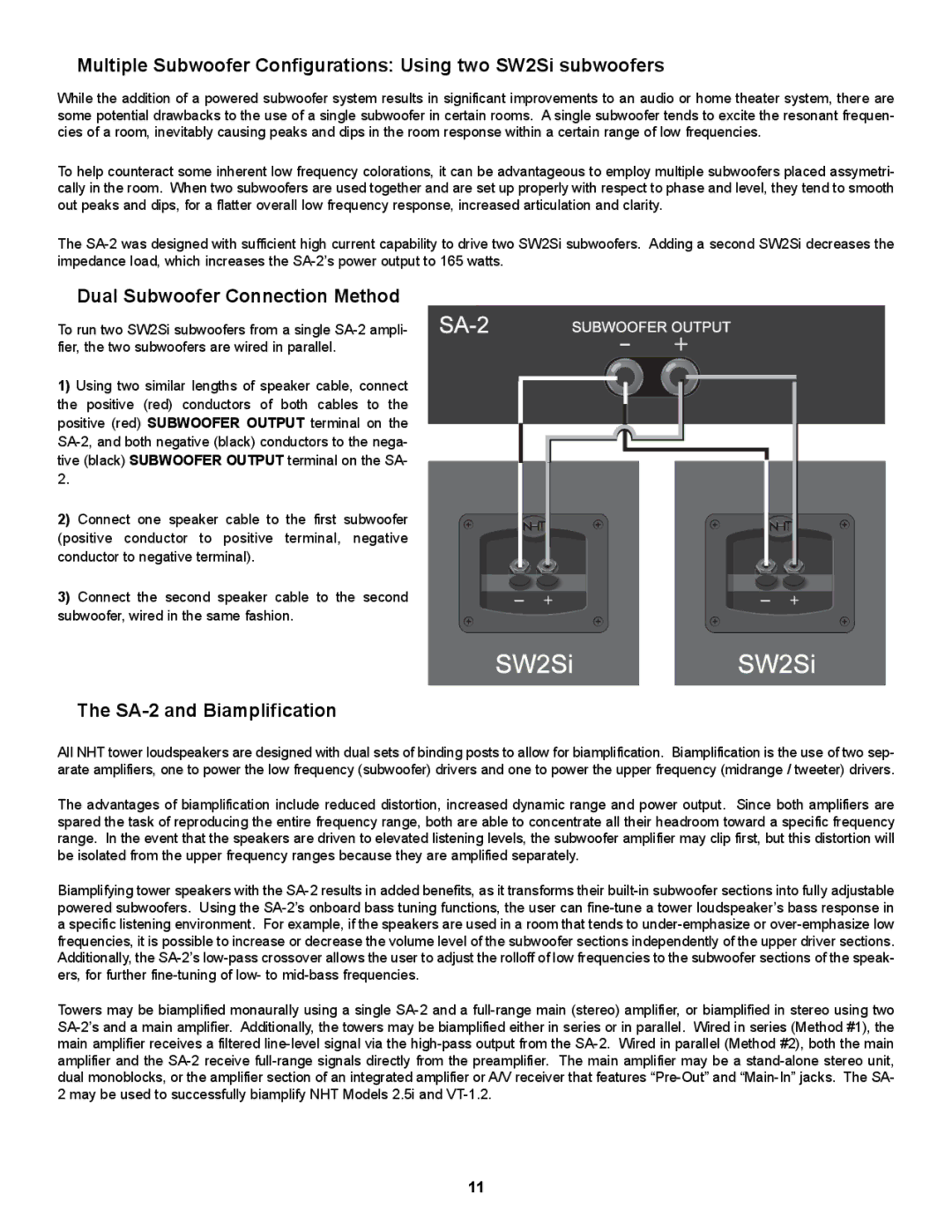SA-2 specifications
The NHT SA-2 is a remarkable achievement in the world of audio engineering, representing a synthesis of innovative design, advanced technology, and exceptional acoustic performance. Launched by NHT (Next High Technology), a company renowned for its commitment to high-fidelity audio reproduction, the SA-2 stands out for both its aesthetic appeal and high-performance specifications.One of the standout features of the NHT SA-2 is its compact design, making it suitable for a variety of listening environments. This speaker is engineered to deliver a full-range sound experience despite its smaller footprint. The SA-2 utilizes a proprietary 5.25-inch woofer that is designed to produce deep and rich bass tones, complemented by a 1-inch silk dome tweeter that excels in handling high frequencies. This combination allows the SA-2 to reproduce a broad dynamic range, ensuring that listeners can experience their music with clarity and detail.
In terms of technology, the NHT SA-2 leverages advanced materials and construction techniques to enhance performance. The woofer cone is formed from a specially engineered composite material that offers both rigidity and lightweight properties. This helps to minimize distortion and ensures that sound waves are produced accurately. Additionally, the tweeter's silk dome design contributes to a smooth frequency response, reducing harshness and delivering a more natural sound.
Another noteworthy characteristic of the NHT SA-2 is its versatility. It is designed for both two-channel stereo setups and can easily integrate into multi-channel home theater systems. The speaker can be used in various configurations, whether as part of a dedicated music listening space or in a surround sound setup, making it a flexible choice for audiophiles and casual listeners alike.
The SA-2 also benefits from thoughtful engineering. Its rear-firing port enhances bass response, allowing for greater low-frequency extension without requiring excessive cabinet size. This design choice enables it to adapt well in different room environments, further enhancing its usability.
Overall, the NHT SA-2 embodies the core principles of high-quality audio reproduction. With its advanced construction, thoughtful engineering, and versatile application, it is an excellent choice for anyone looking to elevate their listening experience. Whether used for music, movies, or gaming, the NHT SA-2 promises a captivating and immersive sound that delights the senses.

